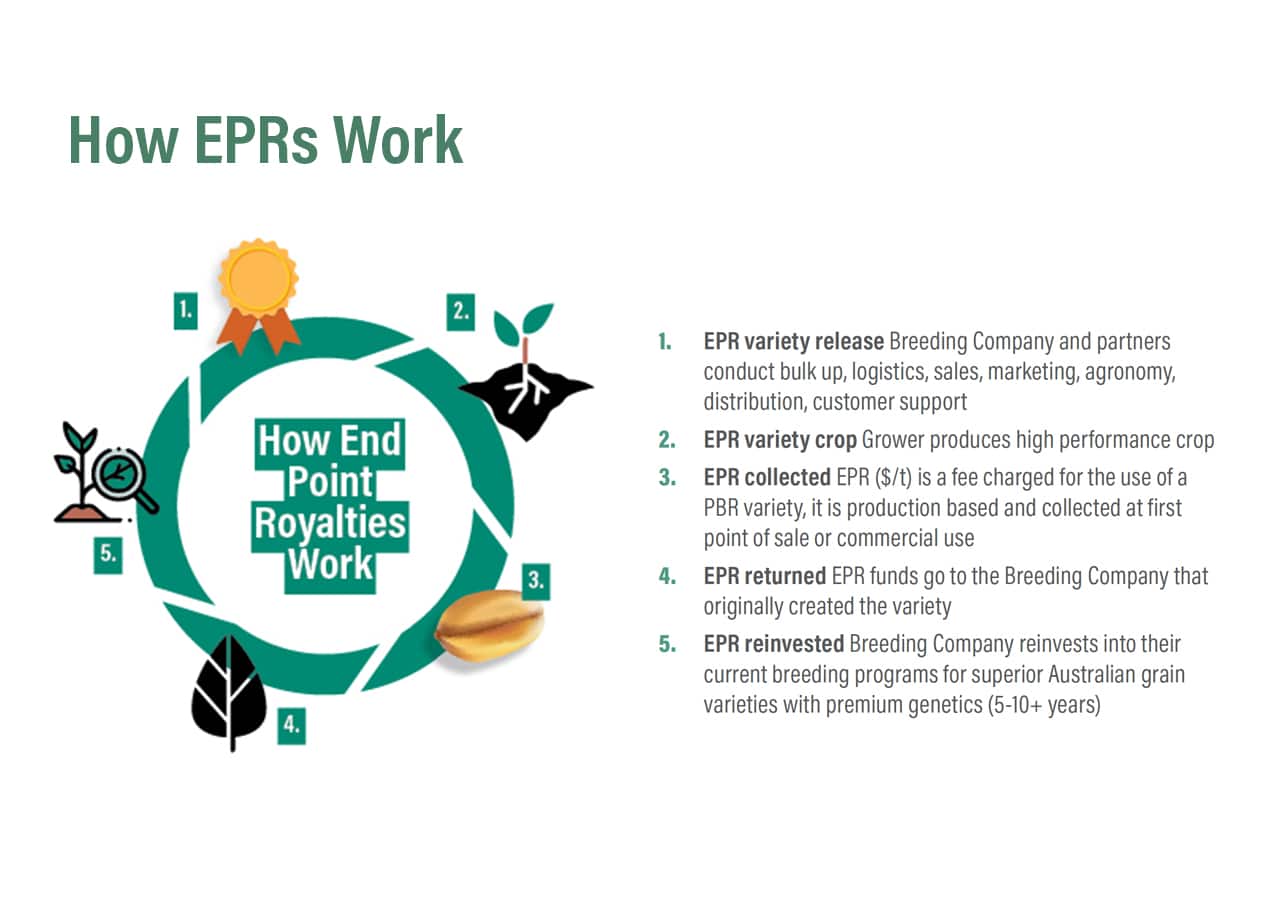An End Point Royalty (EPR) is a mechanism of value capture used by plant breeding companies to recover their return on investment. It is then reinvested to fund ongoing grain and pulse breeding activities.
First released in 1996, there are now approximately 250 EPR varieties in the Australian market. It is a risk sharing mechanism, where the crop grower pays a royalty based on production, rather than a set fee, for the relevant variety.
It encourages innovation to deliver continually improved varieties that meet the needs of Australian grain and pulse growers, today and in the future.
Why EPRs are important
Developing new crop varieties requires a significant level of investment over many years, sometimes more than a decade.
EPRs are the primary funding source for grain breeding activities, although some canola varieties have all or a portion from seed sale. They are critical for the ongoing development of high performance, superior grain varieties for Australian conditions and markets.
By pegging the EPR to paddock performance, when a variety performs well – with higher yields, greater disease resistance, and superior quality – both the farmer and the breeder benefit.
Every time an Australian farmer pays the EPR, they are contributing to the current and future success of the Australian broadacre crop industry.

